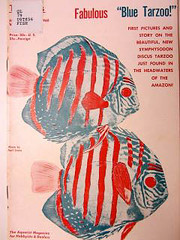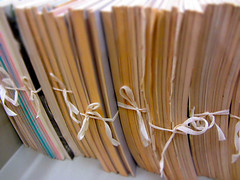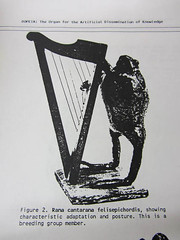 For the past two weeks, it has been my privilege to work with the collections of the National Museum of Natural History Library here in Washington, DC. As part of my library studies program at the University of British Columbia, I came here to do a short practicum and learn as much as I could about natural history libraries. I am fascinated by the natural world and ornithology, so I was very excited to come and see first hand the “ins and outs” of a world-class life sciences library and museum.
For the past two weeks, it has been my privilege to work with the collections of the National Museum of Natural History Library here in Washington, DC. As part of my library studies program at the University of British Columbia, I came here to do a short practicum and learn as much as I could about natural history libraries. I am fascinated by the natural world and ornithology, so I was very excited to come and see first hand the “ins and outs” of a world-class life sciences library and museum.
During my time here I worked on two projects, one in the Fishes library and the other in Reptiles.
The Fishes collection holds more than 8,000 items, and is slated for relocation in January 2012. The NMNH Library was eager to safeguard the collection following the recent experience they had when their main collection was moved to a new location. The contractors hired to move the items were not gentle, and some items were damaged as a result. My responsibility was to go through the Fishes collection and identify items that were fragile or in poor condition. I also removed a few duplicate items and set others aside for Special Collections.
The Reptiles collection will also be moved in January. The new location will follow the Library of Congress call number system for shelving serials, rather than journal title. Reorganizing the serials was simple but not easy. The reorganization process was complicated by the fact that not all the titles appeared on the list of items to be moved. This led to a few surprises, when we came across titles that weren’t on the list. A few times, we were forced to back-track and re-shift volumes in order to correct these omissions. Other items were mislabeled, not cataloged, or did not have bar codes, and were set aside for the Technical Services department to correct.
While working with the Fishes library, these were the questions I needed to answer about each item I pulled as a candidate for preservation:
- Is the item in reasonably good condition for transit? If no, then:
- What method should be used to safeguard it from damage?
Items like older, unbound periodicals were usually placed in archival envelopes. Newer journals in good condition could be tied with twill tape or placed in Princeton files. Books in poor condition (missing covers, lose spines, pages falling out) were both tied and placed in envelopes. Items in fair condition were either given envelopes or tied, depending on the general characteristics of the item (e.g.: age, dimensions, paper quality, condition of the spine/binding). I learned a new tying technique from Polly Lasker (my supervisor) that reduces bulk and the likelihood of becoming untied once back on the shelf.
The work in the Fishes library took up the first week, and was a great lesson in the thoroughness needed for preservation work. Once the move is completed, I hope to hear from the library and find out how it went!
In the course of prepping the Fishes library, I found some very interesting items:
- Two satirical journals (Dopeia & Ichtherps) were discovered and set aside to be written up and featured by a reference librarian on the NMNH website.
- An issue of a tropical fish magazine from the 1940s that discussed the difficulty of acquiring new fish due to the wartime rationing and cuts of supply lines in Asia. I would not have expected to find commentary on WWII hardships in the Fishes library of the Smithsonian, so it came as a pleasant surprise.
- A crumbling book from 1846 that turned out to be from the personal collection of Spencer Fullerton Baird, a long-serving Secretary of the Smithsonian Institution. This was given to Special Collections.
I’d like to sincerely thank all the librarians and staff who worked with me during my practicum. This has been a great learning experience for me, and I appreciate the time taken out of your busy schedules to try and show me the ropes. Thank you all so much!
— Mele Avery




Be First to Comment